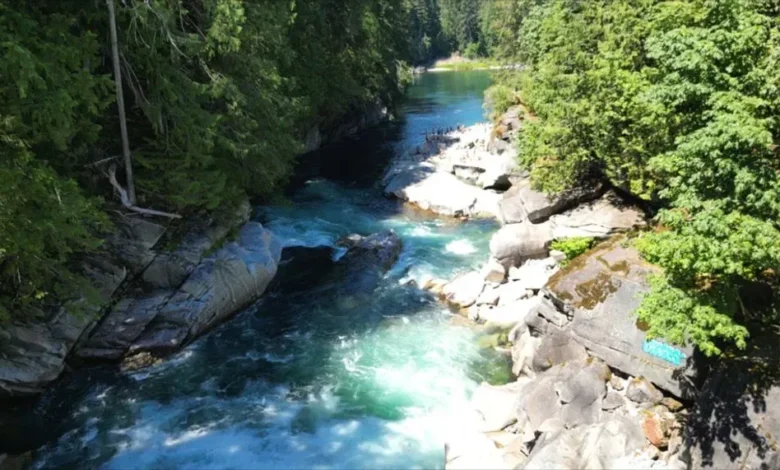Eagle Falls Washington: A Comprehensive Guide to One of the Evergreen State’s Hidden Gems

Nestled in the heart of the Cascade Range, Eagle Falls Washington is a captivating natural wonder located in Snohomish County, Washington. Situated along the South Fork of the Skykomish River near the town of Baring, this 25-foot cascade waterfall has become a beloved destination for outdoor enthusiasts, photographers, and nature lovers alike. Eagle Falls Washington combination of stunning scenery, recreational opportunities, and rich history makes it a must-visit spot in the Pacific Northwest
Table of Contents
- Introduction to Eagle Falls
- Geography and Natural Features
- History and Cultural Significance
- Recreational Activities
- Hiking Trails
- Swimming and Cliff Jumping
- Kayaking and Water Sports
- Fishing and Wildlife Watching
- Safety Considerations
- Best Time to Visit
- Nearby Attractions
- Conservation Efforts
- Visitor Tips
- Conclusion
1. Introduction to Eagle Falls
Eagle Falls Washington is renowned for its breathtaking beauty and accessibility, making it a popular spot for both locals and visitors. The falls are easily accessible via U.S. Route 2, just east of the town of Baring, Washington. Despite its proximity to the highway, the area surrounding the falls offers a sense of seclusion and tranquility, allowing visitors to immerse themselves in the natural beauty of the Pacific Northwest.
2. Geography and Natural Features
The Eagle Falls Washington are located on the South Fork of the Skykomish River, which originates in the Cascade Mountains. The river’s glacial-fed waters cascade over a series of rocks, creating a dramatic and picturesque waterfall. The surrounding landscape is characterized by dense forests of Douglas firs and western red cedars, moss-covered rocks, and a variety of ferns and wildflowers. This lush environment supports a diverse range of wildlife and contributes to the area’s serene atmosphere.
3. History and Cultural Significance
Eagle Falls Washington has a rich history that dates back to the indigenous peoples of the region. The area was traditionally inhabited by the Snoqualmie and Skykomish tribes, who relied on the river’s resources for fishing and transportation. The falls themselves are believed to have held spiritual significance, serving as a place of reflection and connection to the natural world.
In more recent history, Eagle Falls Washington gained national attention in 1926 when daredevil Al Faussett successfully navigated the falls in a boat, an event that was widely publicized at the time. This stunt highlighted the falls’ dramatic features and attracted visitors seeking adventure and spectacle. Today, the falls continue to draw attention for their natural beauty and recreational opportunities.
4. Recreational Activities
Hiking Trails
While Eagle Falls Washington itself is accessible from the highway, the surrounding area offers several hiking trails that provide stunning views and a deeper connection to the landscape. One popular trail is the Heybrook Lookout Trail, a 2.6-mile roundtrip hike that leads to a fire lookout tower with panoramic views of Mount Index and the Skykomish Valley. Another notable hike is the Lake Serene Trail, a more challenging 7.2-mile roundtrip journey that rewards hikers with breathtaking views of a crystal-clear alpine lake and the towering cliffs of Mount Index. These trails offer opportunities for wildlife viewing, photography, and immersion in the natural beauty of the area.
Swimming and Cliff Jumping
During the warmer months, the pools below Eagle Falls Washington become popular spots for swimming and cliff jumping. The cool, clear waters provide a refreshing respite from the summer heat. However, it’s important to exercise caution, as the currents can be strong, and the rocks around the falls can be slippery. Visitors are advised to swim in designated areas and avoid getting too close to the falls themselves.
Kayaking and Water Sports
For experienced kayakers, the Skykomish River offers challenging rapids and thrilling water conditions. Eagle Falls is considered a Class V+ rapid, making it suitable only for expert paddlers. The river’s swift currents and technical features require skill and experience, and safety precautions should always be observed. It’s essential to check water conditions before attempting any water sports in the area.
Fishing and Wildlife Watching
The Skykomish River is known for its excellent fishing opportunities, with anglers often targeting species such as salmon, trout, and steelhead. The surrounding forests are home to a variety of wildlife, including black bears, deer, and numerous bird species. Bird watchers might be fortunate enough to spot species such as the American dipper, known for its unique behavior of diving into the water to catch insects. The area is also frequented by raptors, such as bald eagles and hawks, which can often be seen soaring above the falls.
5. Safety Considerations
While Eagle Falls Washington is a beautiful and inviting destination, it’s important to be aware of potential hazards. The rocks around the falls can be slippery, especially after rain, and the water can be deceptively cold and fast-moving. Visitors are encouraged to wear sturdy footwear, stay on marked trails, and avoid swimming in areas with strong currents. In recent years, there have been incidents where individuals have fallen into the water and been swept away, underscoring the importance of exercising caution.
6. Best Time to Visit
Eagle Falls is a year-round destination, each season offering a unique experience. Spring and summer are ideal for outdoor activities like hiking, swimming, and kayaking, with the falls at their fullest due to snowmelt from nearby mountains. Autumn brings vibrant foliage, making it a picturesque spot for photographers and nature lovers. Winter, while colder, offers a serene